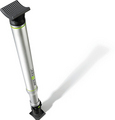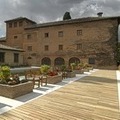[Read more]
Related Links:
Car Tech Live 253: 2012 BMW 328i & Geneva show preview (podcast)
2012 Geneva auto show wrap-up
2012 GMC Terrain: High-tech goes mainstream (test drive)
LG leans on high-end specs in smartphone push
Myths, Marketing, and Misdirection: Home audio edition

The Light Bulb as a Home Appliance
by: Jetson Green, 2012-03-14 05:55:50 UTC

I’m sure by now you’ve read some of the political talk circulating the web as a result of a recent article by The Washington Post about the Philips LED bulb that won the L Prize and $10 million. The contest was meant to spur lighting innovation and make LEDs more affordable, but readers noted the bulb’s unrebated MSRP of $50 and basically flipped out.
Even Energy Secretary Chu commented on the price: “Nobody expects to pay $50 for a light bulb and quite candidly, if you’re filling your house with light bulbs like that, they should be part of your will,” according to Andrew Restuccia of The Hill.
With the media this LED bulb has generated — especially considering the fact that Philips won the contest in August 2011 — I can’t figure out why there’s not been a more grounded approach to the discussion in the last week or so. So let’s just cut through the clutter and address some of the main talking points.
What are the specs for the L Prize bulb?
It’s a screw-type replacement for the 60-watt incandescent and uses 10 watts of energy. The omnidirectional bulb outputs 900 lumens, has a life of 30,000 hours, has a color of 2700 K (similar to an incandescent), and a CRI of 92. It’s dimmable, contains no mercury, and turns on instantly.
What is the price of the L Prize bulb?
It’s reportedly going to sell for the MSRP of $50, not counting rebates, if available. As of August 2011, 31 utility providers and energy efficiency program partners had signed up to promote and develop markets for the new L Prize bulb. Philips expects to achieve the $22 target L Prize price through utility partner rebates of up to $30 off in-store purchases.
Doesn’t Philips already have a bulb like this on the market?
You can buy a different Philips 60-watt replacement at places like Home Depot. I purchased four AmbientLED bulbs less than a year ago for $40 per bulb and they’re awesome. This same bulb is selling retail for about $25, or $20 right now on Amazon (Wow! You mean it dropped $15-$20 in price in about a year? Yes.) It uses 12.5 watts, outputs 800 lumens, has a life of 25,000 hours, has a color of 2700, and has a CRI of 80. So it’s close in performance to the L Prize bulb but not has high performing in key areas.
What’s the cost of purchasing and using the L Prize bulb?
Based on the cost of the bulb, plus the cost of energy to run the bulb on an assumption of $0.11 kWH: the L Prize bulb costs $82 (prior to any rebates), a halogen bulb costs $186, and an incandescent costs $213, according to a recent Philips press release. These numbers closely align with the same math performed by Think Progress in response to the WaPo feature. By the way, WaPo now concludes that the incandescent will cost $145 more over the life of the L Prize bulb.
But that’s still a high initial price? What to do?
The reality is, many Americans live check to check. Replacing a bulb every 6-8 months is a lot easier than investing in something that won’t need replacing for like 20 something years. Which is why it’s probably time we as a nation find a way to treat home lighting as an appliance worth saving for and purchasing, as opposed to an expendable that’s tossed in the shopping cart and trashed when dead. If it’s cheaper to buy the L Prize bulb when factoring in lifetime energy costs, which it is, then it’s pragmatic to make that happen.
What about Made in America?
To win the L Prize, a majority of the final product assembly and integration must be carried out within the United States. Philips made the white LEDs and electronic driver in the United States. During mass production, all final assembly and testing of the L Prize bulb will be completed in the United States.
The real question: Would you buy one for $50? How about $20?
[+] More about the L Prize LED light bulb from Philips.
Credit: Philips Lighting North America.
Related Articles on JetsonGreen.com:
- Philips Unveils Edison Light Bulb Killer
- Philips Unveils 60W Replacement LED
- LED Bulb with Filament Bulb Appearance



Switch Intros 100-Watt LED Replacement
by: Jetson Green, 2012-03-14 15:38:28 UTC

Switch Lighting, maker of innovative liquid-cooling LEDs, recently announced the availability of a 100-watt replacement bulb that will hit commercial channels. The color temperature is 4100 K, which is less warm than a homely incandescent and perfect for areas in need of bright white light. Plus, this bulb uses about 80% less energy than an incandescent, or 20 watts.
The Switch100 is currently undergoing Energy Star review. It outputs 1600 lumens, lasts 25,000 hours, and has a CRI of 80. The LED bulb can be used in recessed or fully enclosed fixtures, unlike some other LEDs.
Switch100 is dimmable, free of hazardous materials, and turns on instantly. In terms of pricing, I’m waiting to hear back from Switch Lighting on that, but I understand the LED light carries a payback of 6-12 months, according to materials on the company website.
[+] More details about Switch Lighting LED products.
Credits: Switch Lighting.
Related Articles on JetsonGreen.com:
- Switch Intros Affordable LED Light Bulbs
- Philips Unveils 60W Replacement LED
- LSG Intros Glimpse Retrofit LED Downlight












Comments by our Users
Be the first to write a comment for this item.